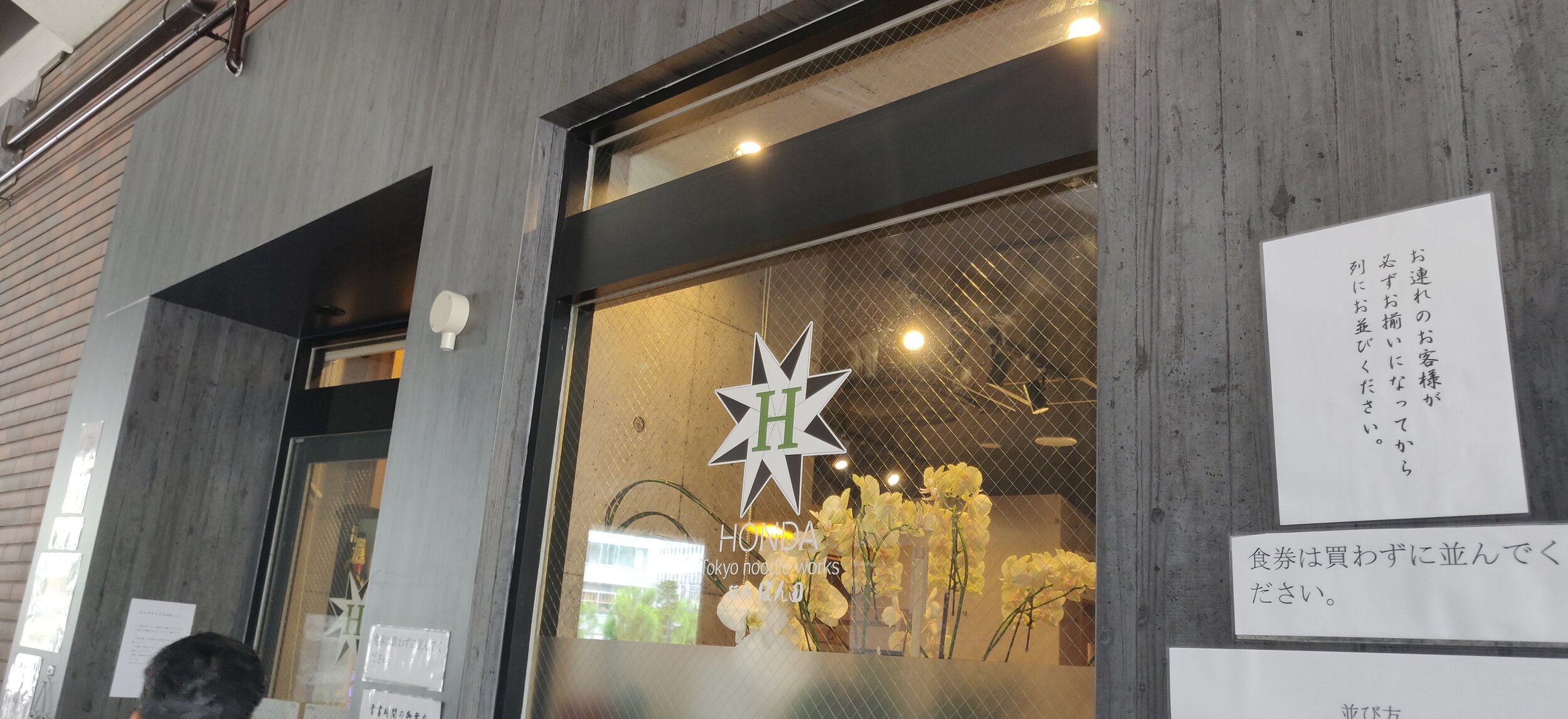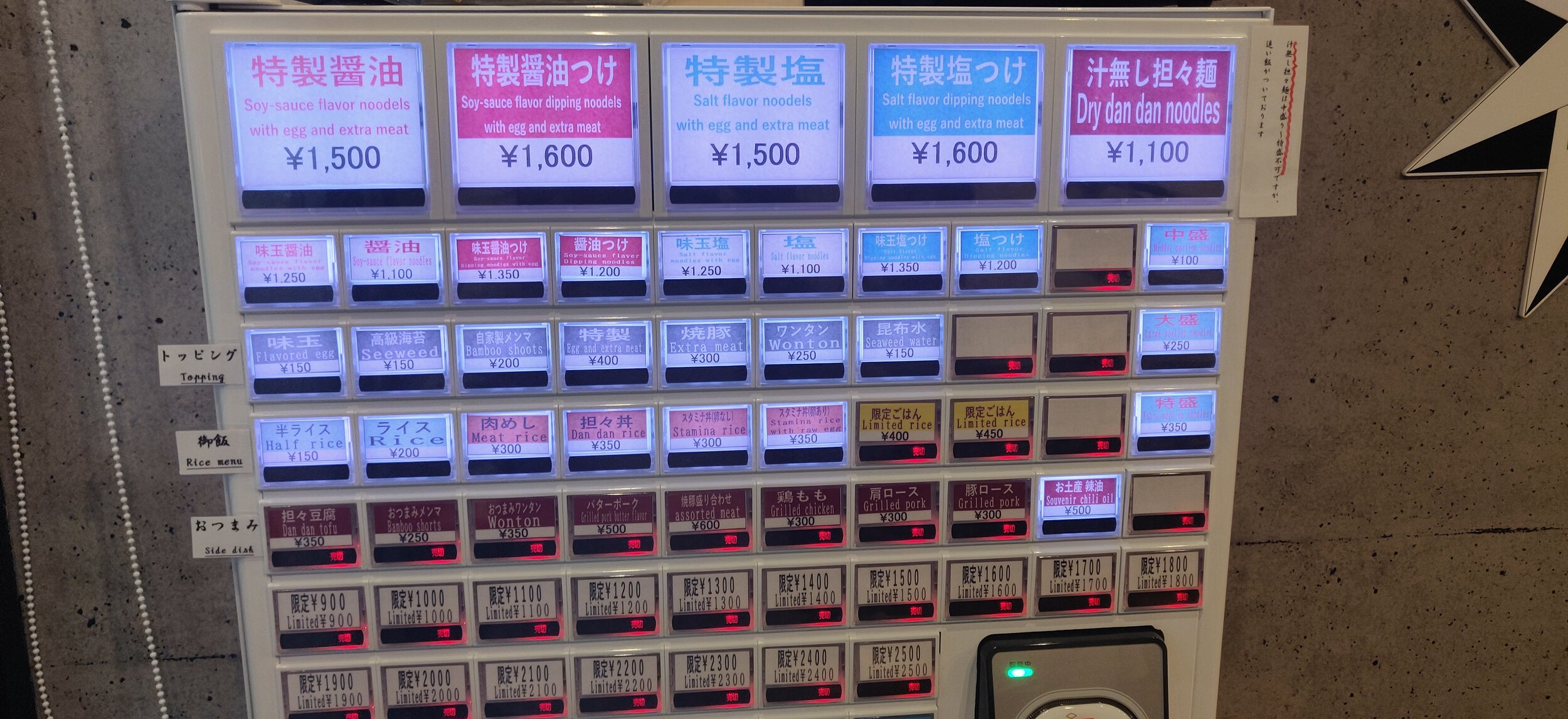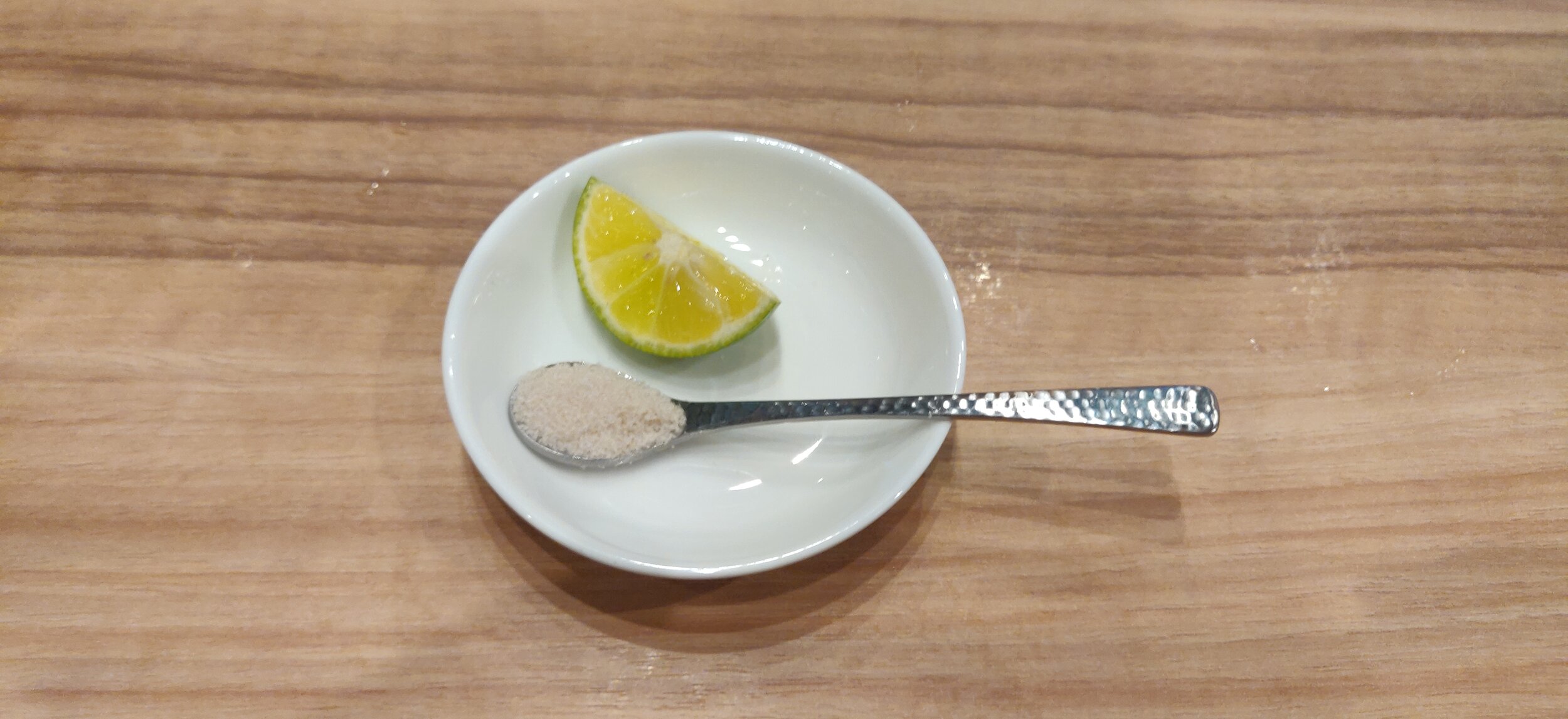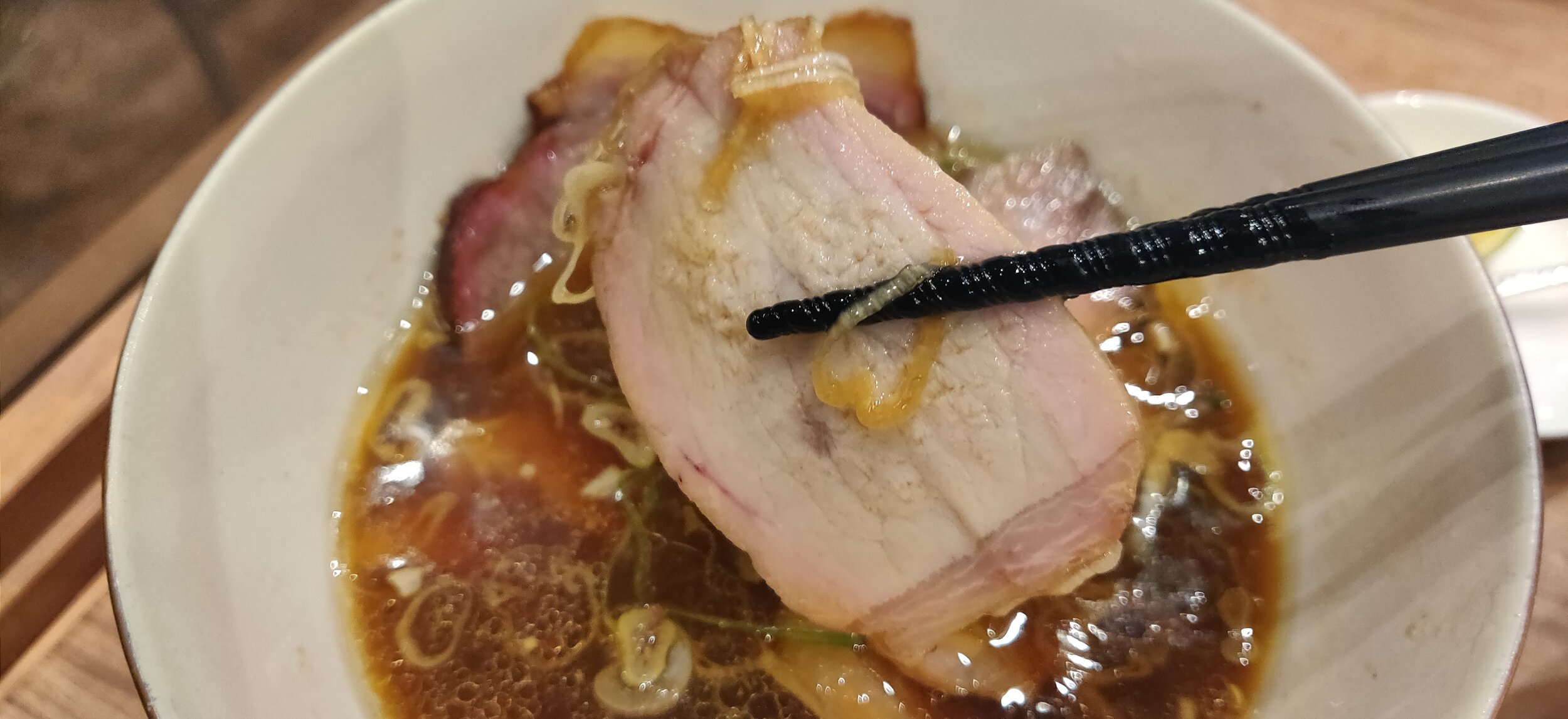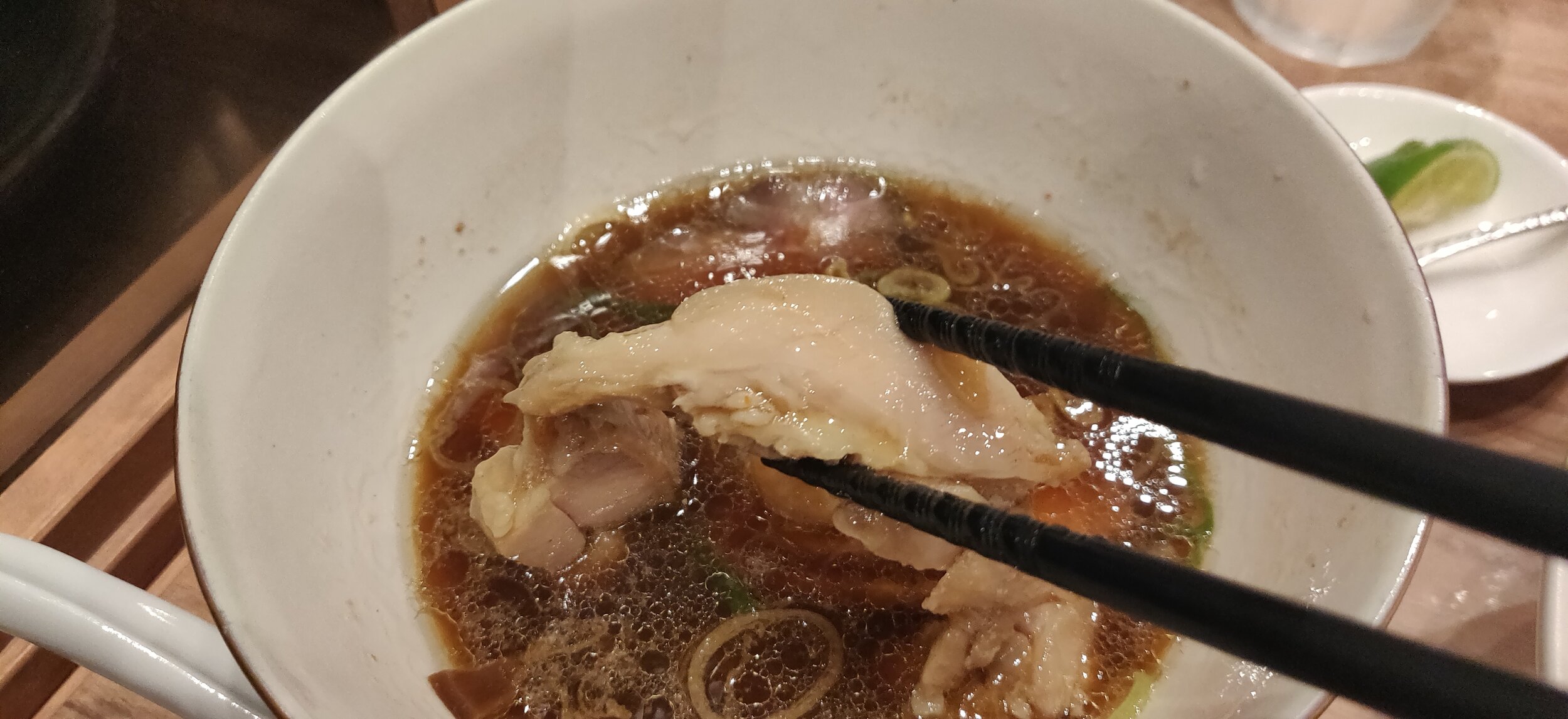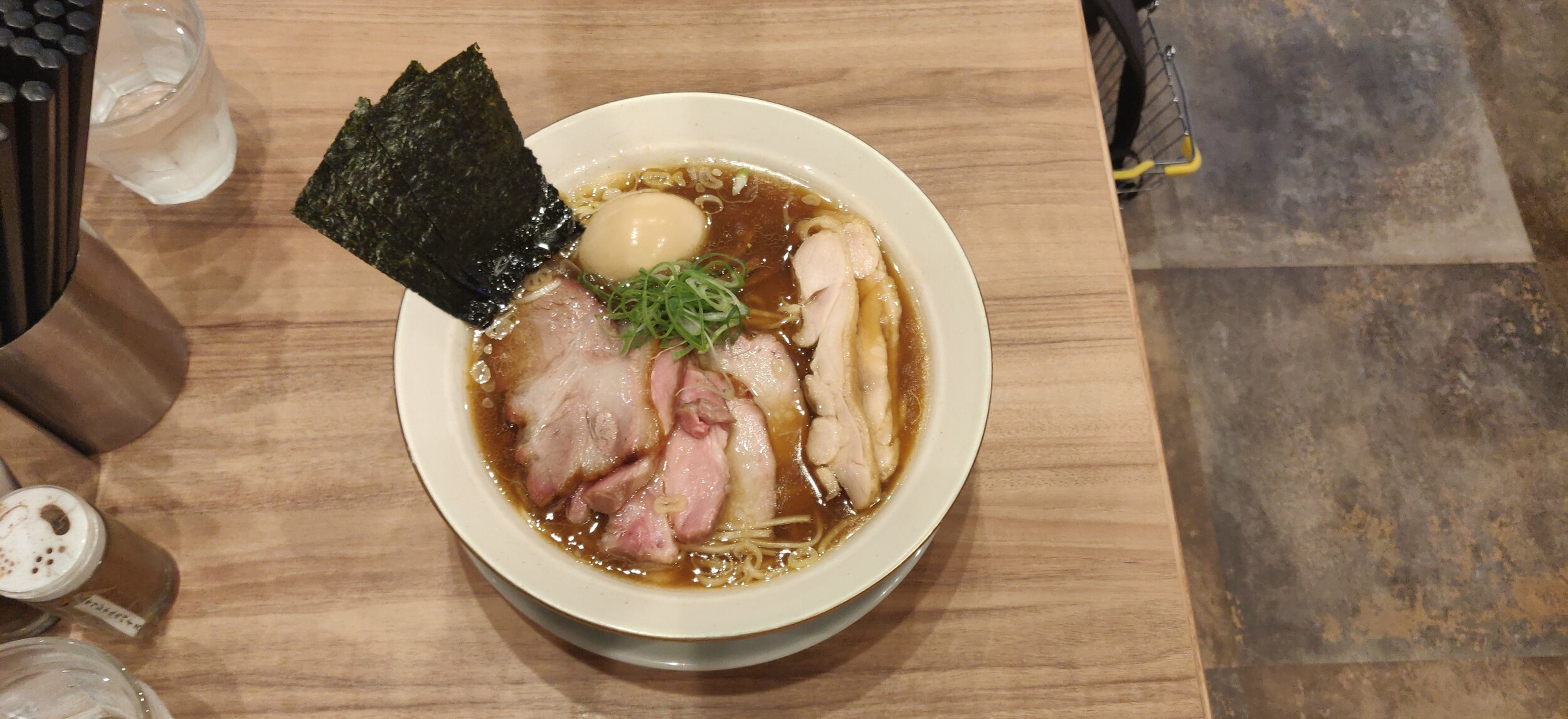Mendokoro Honda (麺処ほん田); 2: Electric Boogaloo of Ramen, Akihabara, Tokyo
Long time followers of my site might already recognize Mendokoro Honda as I wrote a review about them previously when they were located near Higashi-Jujo station. After calling Higashi Jujo home from 2008 to 2020, Mendokoro Honda decided to open a new shop in Akihabara with a new menu to go along with it. The location definitely helps for tourists visiting Tokyo for the first time as the previous shop was a bit out of the way from central Tokyo and away from the more touristy areas. Here you can enjoy the nearby anime and electronic hub of Japan then grab a bowl of top tier ramen for lunch or dinner. Opened during the pandemic in 2020, the new Honda is bound to be a new experience for all tourists coming in 2021.
Honda is literally a stone throw away from Akihabara station and is open Thursdays to Tuesdays with Wednesday being their holiday. Lunch hours are 11:30-15:00 and dinners are typically 18:00-22:00, but be sure to check on twitter or google for shop hours if you’re currently looking to eat ramen during the pandemic as they may be closed at 20:00. Mondays are lunch time only as well so plan accordingly before your visit. Given the proximity to Akihabara station and it being a pretty big tourist hub, Honda caters to a foreign clientele with an English ticket machine. Helps me out since I won’t have to translate the menu for you all, but unfortunately, due to their expansive menu, I won’t be able to give you all a comprehensive review of the shop. On my visit I luckily came with a friend so I was able to try a bit of his ramen so I will review both today. Menu is a tad pricey in comparison to other ramen shops, but given it’s central location and use of high end ingredients, I can say it was worth the price point.
My order for the day was their Tokusei Shoyu Tsukemen (1,600 yen) with a side of Kombu-sui or kelp water (150 yen, listed as seaweed water, but more specifically it is made with kelp). As a side I ended up ordering the Niku-meshi or Meat Rice (300 yen) for a grand total of 2,050 yen. And yes, this was in fact almost double what I usually pay for a ramen meal. Do I think it’s worth it? Check at the end to see what I think. Anyways, my Tokusei Shoyu Tsukemen is as pictured above. The noodles were presented beautifully in an elegant fold with a cut Ajitama soft boiled egg on the bottom and a few slices of dried seaweed up top. Soup consists of an animal stock base with a dark, pungent shoyu tare which hides my chashu slices as well as floating the thinly sliced green onions. On the side to the upper left of my noodles are a slice of Japanese Sudachi citrus fruit and a spoonful of sea salt. The additional topping Konbu-sui is on the upper right of the noodles. I’ll start with the soup which was one of the more decadent soups for a Tsukemen I’ve ever had. The style is something that is picking up in popularity among ramen chefs and it incorporates a thinner, light stock with a rich, pungent shoyu tare seasoning and a layer of glistening Chiyu chicken oil that coats your lips with every slurp. Shops serving similar tsukemen are Uchoku and the famous Iida Shoten. In contrast to a thick and rich Tsukemen soup like a Tonkotsu Gyokai, the looks can be deceiving. While the consistency is thin, the long simmer of chicken ensures a full steep of flavors providing an extremely flavorful broth. The shoyu is a darker blend as you can see from the color. It provides a pungent, deep seasoning of the chicken stock that elevates it to a new level. I particular enjoyed the Chiyu which floats above the surface and coats each noodle when dipped.
Noodles are made in house and is a thinner cut than ones you might find in a thick, Noukou Tsukemen. Slippery exterior makes for an extremely satisfying slurp while clinging the thin soup surprisingly well. The flour used for the noodles is extremely aromatic and adds a layer of flavor that works for this style. To get the true taste of this noodle, be sure to try it on it’s own before dipping in to the soup. The salt that’s provided is also meant for the noodle. Sprinkle a bit on the noodle for a flavor change- the salinity it adds to the noodles accentuates the aromatic nature of each strand for a more impactful bite. Squeeze a bit of the Sudachi Japanese citrus in to the noodles as well for a second flavor change that gives it an acidic note that makes for a refreshing bite. When you’re done with your noodles, dump in the Konbu-sui if you ended up ordering it. It acts as the soup-wari, or broth to dilute the soup in order to drink it to finish.
Toppings play no second fiddle with each one adding another element that uplifts the bowl without ruining the balance. One of the pork chashu is smoked similar to a Chinese roast pork with its red color. Another is cooked sous vide in a temperature bath which makes sure the pork retains it’s moisture while heating to the recommended temp for consumption. Finally a sous vide chicken chashu rounds out the meat toppings pairing with the chicken soup perfectly. The thinly sliced green onions give it some aromatic as well as a refreshing crunch.
Chicken Shoyu ramen was great as well, but I think I prefer the Tsukemen. Soup is a slightly richer broth base with a slightly less impactful shoyu tare. If you prefer a traditional soup, this is the way to go. You’ll get the deep savoriness of the chicken soup as well as a high umami factor from the shoyu tare seasoning. Noodles are different as well. The thin, snappy noodles is a bit more brittle than the Tsukemen version and pairs with the soup nicely. The chashu however were the same types and matches the ramen and overall style. Negi green onions and dried seaweed round out the bowl for a nice added flavor profile.
If you’re looking to save a few pennies, I guess the one that could be sacrificed is the pork chashu bowl. If you’re looking for an added side to supplement your meal in case you come extra hungry, it’s not a bad option, but I wouldn’t say this was anywhere near the best I’ve ever had. The thinly sliced pork chashu provided a great smoky aroma while the shoyu mixed with grated daikon radish gave it a spicy kick. Egg yolk up top mellowed out the sharpness of the shoyu sauce and it was good, just not as good as I would have liked.
So, in conclusion, is this meal worth the price point? I would say yes. Honestly Akihabara has a ton of stinkers in terms of ramen shops and Honda is right up there in the upper echelon of shops not only in the area, but throughout Tokyo. The Tsukemen style is one that isn’t readily available at other shops so I think it is a fine option to diversify the types of ramen you have during your trip. If you do live here in Japan, again, it’s a very solid shop. You won’t leave disappointed and I’m sure you’ll have a memorable bowl. If you have already come and visit Honda, be sure to let me know in the comment section below and tell me what you thought. If you’re here looking for ramen recommendations, have a look at my eBook. I detail 15 shops that you must try on your trip!
Your ultimate guide to the best ramen Tokyo has to offer!
June, 2020
45 pg
